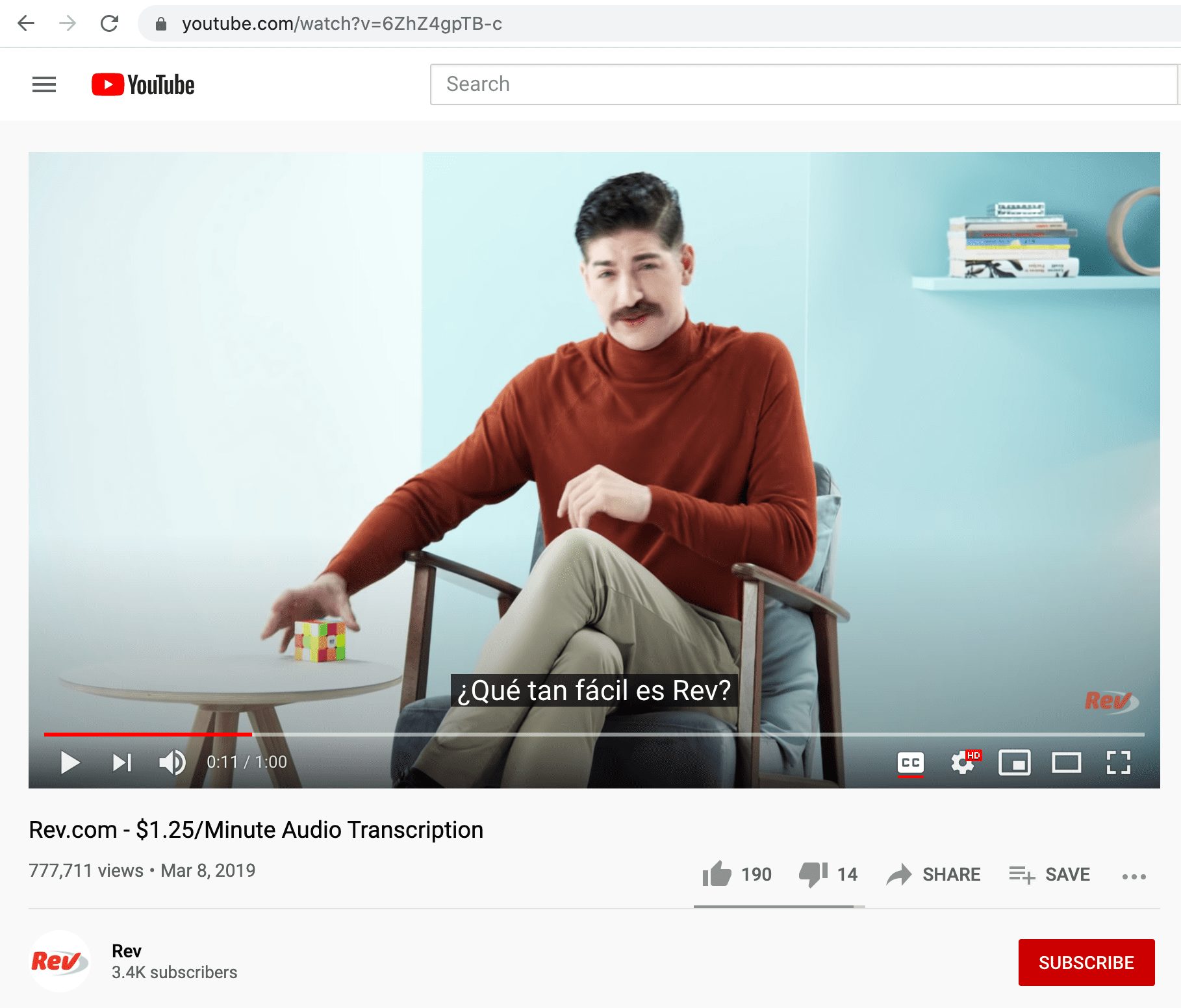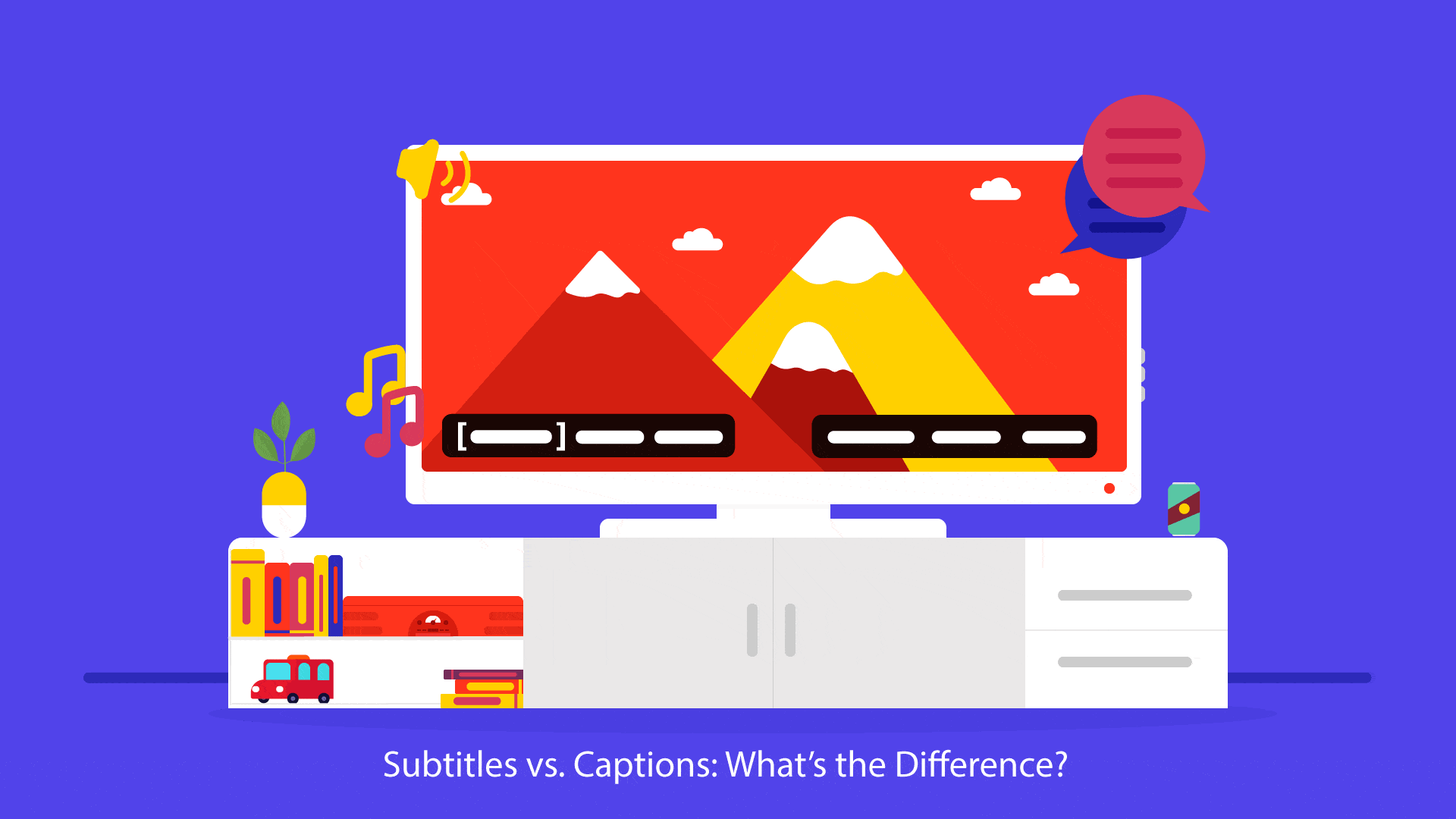Learn a New Language By Turning On Subtitles
If you’re looking for ways to learn a language, you’ll be met with a variety of options that range from classic methods like Rosetta Stone audio tapes, to apps and platforms like Duolingo, which turn language learning into games and quizzes, and so much more — but how do you find an immersive, effective solution to learning a new language?
Consider this — subtitles have shown to be an excellent choice as a language learning tool. In fact, a 2016 study showed a 17% improvement in English language comprehension when ESL speakers watched a TV episode in English using English subtitles.
Tips for Using Subtitles for Language Learning
If you’re looking to learn a new language and the classic Duolingo or Babbel solutions simply aren’t cutting it, we suggest jumping in head first and immersing yourself in the language through video using subtitles. Not to mention, who doesn’t want to be able to watch their favorite TV program while learning a new language?
Here are some tips for how to learn a language using subtitles.
1. Take Notes While You Watch
When we say “take notes while you watch,” we don’t mean writing down every word or sentence and its translation — rather, taking notes can be an excellent way to identify commonly used words, how they’re used, how sentences are structured, and much more.
Overall, taking notes as part of using subtitles for language learning is an important way to transfer an audio and visual experience into a writing one, too — for an even more immersive experience, try transcribing the show you’re watching. Transcription has been shown to provide extra benefits no matter what your learning style is.
The more forms your language learning journey takes, the faster you will be able to pick up on the nuances of the language and get a more holistic learning experience.
2. Choose The Right Content for Your Goals
Different types of video content covers various topics, meaning that the shows or movies you choose can give you exposure to different parts of the language you are learning.
We recommend choosing shows and movies based on:
- Interests, such as fashion, beauty, history, and more
- Industry, which can be particularly useful for those looking to gain an understanding of more technical terminology in a new language
- Level and proficiency, depending on existing familiarity with your target language
While it’s vital to choose content that aligns with your ultimate goal, keep in mind that it’s equally as important to diversify the kind of content you are engaging with to give you a more well-rounded understanding of the language.
3. Work in Short Bursts
Just like overloading your brain when completing tasks at your job, when doing an assignment, or when trying to understand new information can quickly overwhelm and burn you out, the same goes for using subtitles to learn a new language.
It’s recommended to limit your immersion into a new language to anywhere from 30-45 minutes one to two times per week — that way, your brain will have time to truly absorb the information you’re learning and build off of your skills over time.
4. Practice Shadowing and Mimicry
If you’re looking for tips on how to learn a language so that you can speak it effectively, there are two techniques that have been proven to improve speech — shadowing and mimicry.
Shadowing refers to repeating or imitating full phrases or sentences to familiarize yourself with the speech patterns, sentence structure, pronunciation, and other spoken elements of a language. Shadowing is also usually done in conjunction with the speaker, meaning you would be speaking at the same time as the other person.
Mimicry, although similar to shadowing, focuses on reproducing and repeating specific sounds accurately, rather than building an understanding of full sentences. When you mimic a native speaker of a language, you are likely focusing on sounds or inflections that are new to you or don’t exist in your language.
5. Customize the Way You Use Subtitles
Many video platforms provide foreign language subtitles with just two options — on or off. That means the language learner must sometimes adjust how they use subtitles for varying levels of proficiency.
For example, if you’re only a few weeks into learning a new language, and have no prior knowledge of said language, you may choose to use your subtitles much differently than someone who is nearing proficiency or fluency in that language.
Here are a few ways to “customize” how you use subtitles:
- Using dual subtitles provides a seamless language learning experience by showing subtitles in both your native language, as well as the language you are learning.
- You can also choose to use reverse subtitles, where the audio of the content is in your native language, while the subtitles are in the target language.
- Just like pausing content is good for taking notes, slowing down the speed of the video (like YouTube’s options for .75x and .5x speed) can give you more time to read the subtitles and process what they’re saying.
- As you get more advanced, try watching the content with subtitles and no audio to decipher what the characters are saying, or vice versa, with the foreign language audio and no subtitles.
6. Take Your Skills to the Real World
As with any other skill, practicing your new language outside of the home is a crucial step to solidifying your knowledge. A great way to do this is to find a restaurant, coffee shop, or other establishment where you will have the opportunity to order food or interact with native speakers to practice your language in the real world.
If you know someone who speaks the language you’re learning, we also recommend getting feedback from them on your pronunciation, intonation, and grammar.
Where to Find Content With Subtitles for Language Learning
Now that you know the basics of subtitles for language learning, you may be wondering — where can I go to find video content that has subtitles in the language I want to learn? Lucky for you, we’ve got a few recommendations for where you can look.
1. Streaming Platforms
Most streaming platforms have foreign subtitles available for all users. To see the languages supported by each platform, consult this list:
- Hulu has English subtitles available for much of their foreign language content, but the reverse is not true — the only non-English subtitle language supported by Hulu is Spanish, and it’s not available for much of the content on the platform.
- Netflix, on the other hand, supports around 62 languages on its platform, including Arabic, Mandarin, French, German, and more.
- Amazon Prime also has an extensive list of supported caption and subtitle languages.
- Similar to other streaming services, Max offers subtitles in select languages depending on the show or movie — we’re not sure what the exact number is, but it’s less extensive than that of Netflix or Amazon Prime.
- Disney+ offers voiceovers and subtitles in over 15 languages — English, Spanish, French, Dutch, Cantonese, Dansk, Portuguese, German, Italian, Japanese, Norwegian, Finnish, Swedish, Icelandic, and Polish.
- Apple supports 32 world languages across many of their products, though it’s unclear how many of those are supported by Apple TV specifically.
2. Specialized Video Content
If streaming platforms don’t have enough content in the language you’re looking to learn, or don’t support your language at all, we recommend turning to video content providers geared for language learning. That includes:
- FluentU creates curated libraries for users to be able to watch video content in the language they’re looking to learn.
- Yabla provides a similar, immersive language learning service, with varying levels of difficulty and interactive subtitles.
- YouTube, as the largest video library on the Internet, has a wealth of language learning video content, each channel providing a slightly different experience depending on the viewer’s goals.
3. Language-Learning Platforms
We had to include the obvious in this article — supplementing the use of subtitles for language learning with classic, well-known apps and websites like Duolingo, Babbel, Rosetta Stone, Memrise, or any one of the hundreds available online can help you learn a language faster.
4. Get Your Own Subtitles With a Subtitling Service
Taking the initiative to get your own foreign subtitles for video content from a service provider like Rev is an excellent option for language learners who are:
- Nearing mastery and exploring more high-level or niche speech.
- Looking to understand more technical terminology not found on streaming platforms or in video content.
- Wanting to further their skill sets by cross-checking their own translation of video content with subtitles provided by real fluent speakers.
To get yours today, check out Rev’s foreign subtitling services. We support over 15 languages, and leverage a team of fluent speakers to create accurate, professional subtitles that can be burned into your video content.
Can Subtitles Actually Help With Language Learning?
The short answer is yes – in the same way that closed captions help ESL learners improve their English skills, subtitles offer a new approach to language comprehension, helping readers and listeners learn new languages.
When someone is able to simultaneously hear and read a foreign language, it helps their phonetic understanding of it. Additionally, it helps build familiarity with the general vocabulary and sounds of the language.
To summarize, the benefits of using subtitles for language learning include:
- Increasing reading speed and listening comprehension
- Growing foreign language vocabulary
- Improving word recognition and grammar
- Helping learners visualize a new language
Ready to Start Your Journey of Using Subtitles for Language Learning?
Whether you’re a beginner looking for tips on how to learn a language, an intermediate speaking looking to strengthen your skills, or an advanced or fluent speaker looking to brush up on your knowledge, these tips and tricks will help you get a holistic understanding of the language, as well as making for a speedy learning process.




